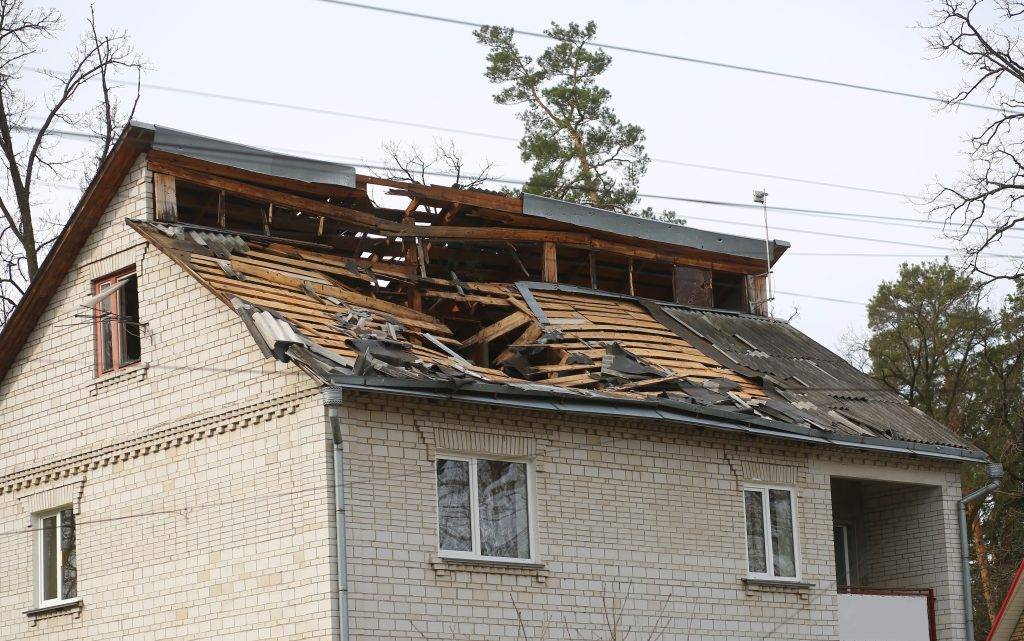
Deciding whether to file an insurance claim for roof damage can be confusing. In Pennsylvania, where weather can harshly impact your property, understanding the nuances of roof insurance claims is crucial. This article will guide you through the process, addressing common concerns such as whether homeowners insurance will cover a leaking roof, the extent of coverage for roof replacement, and how to claim for wind damage.
Should I File an Insurance Claim for My Roof?
Deciding to file an insurance claim for your roof is not always easy. In Pennsylvania, the key factor to consider is the cause and extent of the damage. For example, if a recent storm has damaged your roof, it is generally advisable to file a claim.
Filing a claim can help you manage the repair costs more effectively, especially if the damage is extensive enough to compromise your home’s structural integrity or lead to further issues like water damage inside.
Key considerations:
- Extent of Damage: Minor damage might not warrant a claim due to the deductible costs, but significant damage that affects the roof’s functionality should be addressed.
- Cause of Damage: Insurance typically covers events that are sudden and accidental. Regular wear and tear or damage due to lack of maintenance is often not covered.
- Cost vs. Deductible: Compare the repair cost with your deductible. If the repair costs are close to or less than the deductible, it might be financially sensible to pay out-of-pocket.
It’s essential to assess whether you should file an insurance claim for your roof by considering these factors carefully. This decision can impact not only the immediate repairs but also how your insurance premiums could change in the future.
Will Homeowners Insurance Cover a Leaking Roof?
In Pennsylvania, determining whether your homeowners insurance will cover a leaking roof hinges on how the damage occurred. Generally, if the leak is due to a covered peril like a storm or accidental impact (e.g., a tree falling on the house), your insurance is likely to cover the repairs. It’s important to note, however, that leaks resulting from gradual wear and tear or lack of maintenance typically aren’t covered under standard policies.
What to Consider:
- Immediate Action: As soon as you notice a leak, it’s crucial to document the damage and mitigate further risks to your property by making temporary fixes, if possible.
- Documentation: Take clear photos of the damage and note any related incidents that might help your claim, like a recent storm.
- Inspection: Have a professional assess the roof. This report can substantiate your claim, showing that the damage was sudden and accidental.
Does Homeowners Insurance Cover Roof Replacement?
Roof replacements can be a significant expense, so understanding your insurance coverage is crucial. Most homeowners insurance policies will cover roof replacement if the damage is due to a covered event, such as a fire, severe storm, or other sudden accidents. However, the age of your roof and the specific terms of your policy can affect coverage. For instance, older roofs might only be covered for their depreciated value rather than the cost of a full replacement.
Coverage Details to Check:
- Age of Roof: Policies might have stipulations that reduce coverage based on the roof’s age.
- Type of Damage: Coverage might vary depending on whether the damage is from a natural disaster versus gradual deterioration.
- Policy Terms: Some policies may offer full replacement cost, while others only cover actual cash value.
Next Steps: If your roof is damaged and you’re considering a replacement, it’s wise to contact your a public adjuster to understand the specifics of your coverage. Confirm whether your situation qualifies for a claim and understand the process for filing.
Claiming Wind Damage on Your Roof Insurance
If your roof has taken a beating from the wind, getting things sorted with your insurance shouldn’t add to your stress. Start by taking a good look at the damage once the wind dies down. If shingles are missing or anything looks off, it’s crucial to document everything clearly—snap some pictures or take a video.
Once you’ve assessed the situation, consulting your insurance policy for coverage details on wind damage is the next step. It’s essential to understand the nuances of your policy—what’s covered, what’s not, and any deductibles that might apply.
When you’re ready to file your claim, having an expert by your side can make all the difference. Alliance Adjustment Group specializes in helping homeowners like you navigate the complexities of roof damage claims. Our expertise ensures that your claim is filed promptly and accurately, helping you to secure the maximum possible compensation for your wind-damaged roof.
Ready to Make a Decision on Your Roof Claim?
Deciding whether to file an insurance claim for your roof involves weighing the damage severity, understanding your policy, and considering the financial implications. If your roof has sustained damage from recent weather events or other accidents, it might be time to file a claim. Remember, proper documentation and timely action are critical in ensuring your claim is processed smoothly and efficiently.
For expert guidance on navigating roof insurance claims in Pennsylvania, reach out to Alliance Adjustment Group. We’re here to help you determine if filing a claim is the right choice and to support you throughout the process, ensuring you get the best possible outcome. Don’t navigate this alone—let our team provide the expertise and support you need.
Disclaimer:
The information provided on this website is for general informational purposes only and does not constitute legal advice.
While we strive to provide accurate and up-to-date information, insurance policies and regulations can vary. It is important to consult with your specific insurance provider or a qualified professional for advice tailored to your individual circumstances.
